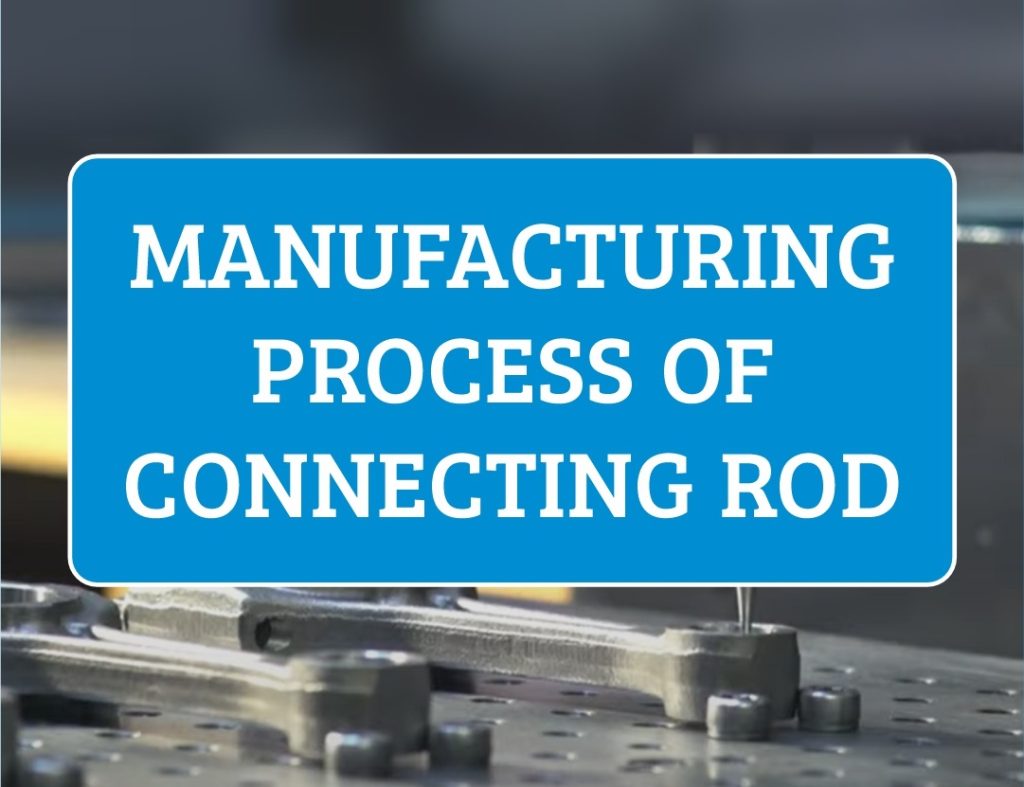
From the roar of a race car engine to the hum of a diesel generator, connecting rods are the vital links that convert the energy of combustion into mechanical motion. Their importance in the functioning of these machines cannot be overstated, as they play a critical role in translating explosive power into movement. But have you ever wondered how a connecting rod is actually made?
To truly appreciate the engineering marvel that is a connecting rod, we must first explore the materials that serve as its foundation. This blog takes you behind the scenes of the manufacturing process—from raw material to precision-engineered component—to understand what goes into creating this small yet powerful part. We will delve into the selection of high-quality metals and alloys, examining how their unique properties contribute to the durability and performance of the finished product.
🔧 What Is a Connecting Rod?
A connecting rod (often called a “con rod”) connects the piston to the crankshaft in an internal combustion engine. It converts the reciprocating motion of the piston into rotational motion at the crankshaft.
Because of the immense forces and high speeds it must endure, the connecting rod must be:
-
Extremely strong
-
Lightweight
-
Precisely balanced
-
Highly durable under stress and heat
Now, let’s dive into how these rods are crafted.
🏗️ Step 1: Material Selection
The first step is choosing the right material. Depending on the engine application, manufacturers typically use:
-
Carbon steel (commonly 4340 or 1045 grades)
-
Aluminium alloys (used in high-performance or racing engines)
-
Titanium (lightweight and ultra-strong, but very expensive)
-
Powder metal (used in mass-production due to low cost and decent strength)
Each material affects the rod’s strength, weight, and cost.
🔨 Step 2: Forging or Casting
🔥 Forging
Most high-performance and OEM connecting rods are forged. This process involves:
-
Heating a metal billet until it’s red-hot
-
Placing it into a die (a custom meld)
-
Hammering or pressing it into shape using hydraulic presses or drop hammers
Why forging? It aligns the metal grain structure along the rod’s shape, dramatically increasing strength.
🧱 Casting
For low-cost production, rods may be cast by pouring molten metal into a mold. While cheaper, cast rods are weaker than forged ones and not ideal for high-stress engines.
🧊 Step 3: Heat Treatment
Once shaped, the connecting rod undergoes heat treatment to further enhance its properties.
Processes may include:
-
Quenching and tempering – To increase toughness and fatigue strength
-
Shot peening – Bombarding the surface with steel shots to relieve stress and reduce crack propagation
This step ensures the rod can handle the tensile and compressive loads of engine operation.
🪚 Step 4: CNC Machining and Precision Finishing
After forging and heat treatment, the rod is rough in shape. Now it undergoes CNC machining, where it’s:
-
Drilled for oil holes
-
Bored to precision diameters for wrist pins and crank journals
-
Surface-ground for exact alignment
-
Split at the big-end cap (where the crankshaft fits)
Modern machines achieve tolerances down to microns, which is essential for engine balance and smooth operation.
⚖️ Step 5: Weight Matching and Balancing
Each rod must be:
-
Identical in weight
-
Balanced on both the big end (crankshaft side) and small end (piston side)
Why? Even small weight differences between rods can cause engine vibrations, bearing wear, and reduced performance. Precision balancing ensures smoother operation and longer engine life.
🧪 Step 6: Quality Control and Testing
Every rod is put through rigorous quality control, which may include:
-
Ultrasonic inspection – To detect internal cracks
-
Magnaflux testing – Magnetic particle inspection for surface cracks
-
Dimensional checks – Using CMM (Coordinate Measuring Machines)
-
Hardness and tensile strength testing
Some manufacturers also conduct destructive testing on sample batches to ensure material quality and design strength.
🛠️ Step 7: Assembly and Final Packaging
Finally, the rod is paired with:
-
Connecting rod bolts or studs (often ARP or OEM grade)
-
Optional bushings or bearings
-
Assembly torque specs applied
After inspection, rods are packaged for OEM delivery or aftermarket sale, often with serial numbers and batch IDs for traceability.
🌍 The Global Market for Connecting Rods
Many countries like Germany, China, India, Russia, and the U.S. have strong industries for producing OEM and performance connecting rods. Exporters often cater to:
-
Automotive and motorcycle manufacturers
-
Agricultural and marine engine suppliers
-
Aftermarket tuners and race teams
🧰 Final Thoughts
The connecting rod may seem like just another engine part, but its engineering complexity, precision manufacturing, and material science make it one of the most fascinating components under the hood.
Next time your engine revs, remember: that powerful motion starts with a beautifully crafted rod doing its job, thousands of times per minute—flawlessly.


